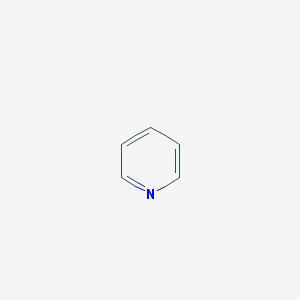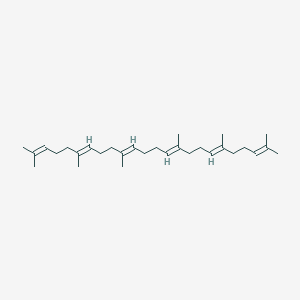-
Categories
-
Pharmaceutical Intermediates
-
Active Pharmaceutical Ingredients
-
Food Additives
- Industrial Coatings
- Agrochemicals
- Dyes and Pigments
- Surfactant
- Flavors and Fragrances
- Chemical Reagents
- Catalyst and Auxiliary
- Natural Products
- Inorganic Chemistry
-
Organic Chemistry
-
Biochemical Engineering
- Analytical Chemistry
- Cosmetic Ingredient
-
Pharmaceutical Intermediates
Promotion
ECHEMI Mall
Wholesale
Weekly Price
Exhibition
News
-
Trade Service
Professor Cheng Ke’s team researched and reported a new method of minimally invasive “injection” of heart patches.
Heart disease seriously threatens the lives of patients.
Existing methods such as intravenous injection, coronary artery injection, myocardial injection, and myocardial patch are used to deliver stem cells to treat damaged myocardium.
The team of Professor Cheng Ke from North Carolina State University and the University of North Carolina at Chapel Hill reported on a new method of minimally invasive "injection" of heart patches.
This method injects a hydrogel carrying stem cells or exosomes into the pericardial cavity, and uses the pericardial cavity as a natural hydrogel shaping "mold" to form a uniform repair patch on the surface of the heart.
Cell and exosomal treatments provide promising regenerative medicine solutions for repairing damaged myocardium.
How to directly deliver these therapeutics to the injured area and improve the delivery efficiency is an important challenge for stem cells and exosomes to treat cardiomyopathy.
"The heart patch is an effective method, but the implantation of the heart patch generally requires open thoracic surgery, and the trauma is serious.
We seek a safe and effective method that can be implemented minimally.
The pericardial cavity is a space between the pericardium and the heart, which is filled with pericardial fluid to provide protection and lubrication for the heart.
Using the pericardial cavity as a natural mold, using hydrogel to load stem cells and exosomes, through intrapericardial injection, the research team successfully implanted a "heart patch" in the area of myocardial infarction, achieving an "in-situ" mold .
"We call this delivery method intraPeriCardial injection, that is, iPC injection," Professor Cheng Ke said.
"iPC injection significantly increases the retention rate of stem cells and exosomes, reduces the immune response, and promotes myocardial infarction in mice and rats.
In further translational research, the research team used thoracoscopy technology to confirm the feasibility and safety of minimally invasive iPC injection therapy in experimental pigs.
"IPC injection hydrogel will not cause side effects such as pericardial tamponade and pericarditis.
"LARIAT refers to percutaneous left atrial appendage ligation.
It is a commonly used procedure for the clinical treatment of atrial fibrillation-induced stroke and heart failure.
Reference materials:
[1]Zhu, D.
, Li, Z.
, Huang, K.
et al.
Minimallyinvasive delivery of therapeutic agents by hydrogel injection into thepericardial cavity for cardiac repair.
Nat Commun 12, 1412(2021).
Professor Cheng Ke’s team researched and reported a new method of minimally invasive “injection” of heart patches.
Heart disease seriously threatens the lives of patients.
Existing methods such as intravenous injection, coronary artery injection, myocardial injection, and myocardial patch are used to deliver stem cells to treat damaged myocardium.
There are disadvantages such as low retention rate, large trauma and high cost of thoracotomy.
The team of Professor Cheng Ke from North Carolina State University and the University of North Carolina at Chapel Hill reported on a new method of minimally invasive "injection" of heart patches.
This method injects a hydrogel carrying stem cells or exosomes into the pericardial cavity, and uses the pericardial cavity as a natural hydrogel shaping "mold" to form a uniform repair patch on the surface of the heart.
Related research results were recently published in "Nature Communications" magazine.
Professor Cheng Ke is the corresponding author of the article.
Postdoctoral researchers Zhu Dashuai and Li Zhenhua (currently at the School of Pharmacy of Guangzhou Medical University) are the co-first authors of the article.
Cell and exosomal treatments provide promising regenerative medicine solutions for repairing damaged myocardium.
How to directly deliver these therapeutics to the injured area and improve the delivery efficiency is an important challenge for stem cells and exosomes to treat cardiomyopathy.
"The heart patch is an effective method, but the implantation of the heart patch generally requires open thoracic surgery, and the trauma is serious.
We seek a safe and effective method that can be implemented minimally.
" North Carolina State University-North Cheng Ke, Randall B.
Terry Jr.
Distinguished Chair Professor of Regenerative Medicine in the Joint Biomedical Engineering Department of the University of California, Chapel Hill, introduced.
The pericardial cavity is a space between the pericardium and the heart, which is filled with pericardial fluid to provide protection and lubrication for the heart.
Using the pericardial cavity as a natural mold, using hydrogel to load stem cells and exosomes, through intrapericardial injection, the research team successfully implanted a "heart patch" in the area of myocardial infarction, achieving an "in-situ" mold .
"We call this delivery method intraPeriCardial injection, that is, iPC injection," Professor Cheng Ke said.
"iPC injection significantly increases the retention rate of stem cells and exosomes, reduces the immune response, and promotes myocardial infarction in mice and rats.
Repair of myocardium and improve heart function.
"
In further translational research, the research team used thoracoscopy technology to confirm the feasibility and safety of minimally invasive iPC injection therapy in experimental pigs.
"IPC injection hydrogel will not cause side effects such as pericardial tamponade and pericarditis.
More importantly, iPC injection is expected to be implemented in clinical patients through a completely minimally invasive way.
"
"LARIAT refers to percutaneous left atrial appendage ligation.
It is a commonly used procedure for the clinical treatment of atrial fibrillation-induced stroke and heart failure.
For reference, the introduction of intrapericardial catheters during this operation can be easily completed by clinicians iPC injection.
And these series of operations only require local anesthesia, which fully demonstrates the superiority of iPC injection.
" said co-author Joe Rossi, associate professor of cardiology at the University of North Carolina at Chapel Hill.
(Biological Exploration)
Reference materials:
[1]Zhu, D.
, Li, Z.
, Huang, K.
et al.
Minimallyinvasive delivery of therapeutic agents by hydrogel injection into thepericardial cavity for cardiac repair.
Nat Commun 12, 1412(2021).







